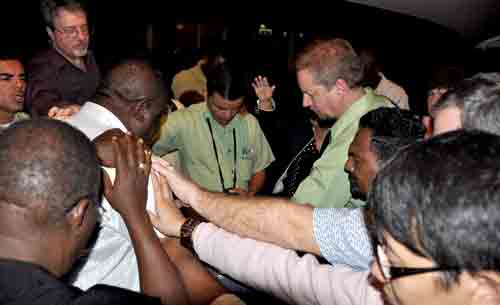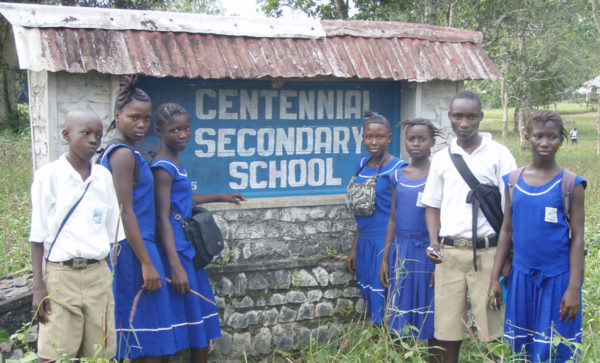12 Jan 250 Years: On This Day in UB History (Jan 12)

On January 12, 2010, a monster 7.3 magnitude earthquake struck Haiti, killing at least 220,000 people and displacing 1.5 million. The capital, Port au Prince, was hit especially hard. Two UB churches in Cite Soleil, the poorest area of Port Au Prince, were destroyed.
At the time, superintendent Oliam Richard was attending the General Conference meeting in Honduras. His wife, Esther, had flown into Haiti the day before. He spent that night, Tuesday, glued to CNN and seeking information on the internet. He tried to find passage home on Wednesday, but nothing was available.
During the closing service of General Conference on Wednesday night, at a packed church in La Ceiba, an offering of $800 was taken up for Haiti. The Canadian delegates added another $900, and the two Guatemalan delegates gave $50 out of their own pockets (said Jeff Bleijerveld: “This, believe me, is a LOT of money”). The money was presented to Rev. Richard, and the delegates from around the world laid hands on him in prayer.
Rev. Richard was eventually able to reach the Dominican Republic, and then travel by van across the border to Haiti. He found his wife and family shaken, but well. Although their home was still standing, they were staying outside because of the continued aftershocks.
United Brethren people proved very generous, as is usually the case after natural disasters. By June, Global Ministries had received over $170,000 designated for Haiti. In addition, money was sent to Haiti from Jamaica ($6900), Honduras ($900), Hong Kong ($7900), and Canada ($10,000).

 Rita Wild Koroma, 87, passed away on January 8, 2011, in Oxford, England. She served as a missionary teacher in Sierra Leone 1954-1962.
Rita Wild Koroma, 87, passed away on January 8, 2011, in Oxford, England. She served as a missionary teacher in Sierra Leone 1954-1962.